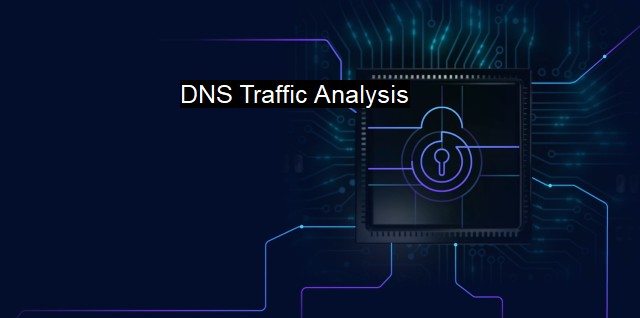What are DNS Traffic Analysis?
The Vital Role of DNS Traffic Analysis in Safeguarding Against Cyberattacks: Antivirus in Focus
DNS Traffic Analysis refers to a process of inspecting, filtering, and interpreting Domain Name System or DNS communication patterns in an attempt to proactively detect and prevent cyber threats or malicious activities. In the context of cybersecurity and antivirus situation, DNS traffic analysis is crucial as it helps practitioners to maintain network security integrity, monitor harmful domains, prevent data breaches, and combat sophisticated cyber threats. It acts as an invaluable tool for implementing proactive measures against cyberattacks, malware, phishing attempts, and other illegal internet activities, further affirming its relevance.To understand the relevance of DNS Traffic Analysis, it is first important to comprehend the definition of DNS. The Domain Name System is a system that translates website names ( www.google.com) into their relevant Internet Protocol or IP addresses. These IP addresses are unique identifiers for devices connected to a network. This translation serves as a key operating enabler for internet activities, as most human users find it easier to identify with names than numerical strings forming IP addresses.
Now, integrating DNS to cybersecurity makes it strategically important since every time a user interacts with an end server or communication endpoint, a DNS query is created. These queries present an opportunity for security analytics to extract valuable information about internet usage patterns, potential cyber-attacks (e.g., Domain Generation Algorithms), and possible breach attempts. Yet, exploiting this opportunity requires efficient and effective DNS Traffic Analysis.
DNS Traffic Analysis often operates by thoroughly examining the request and response patterns between DNS clients and servers, picking anomalies that may suggest a potential cybersecurity threat. if a client floods a DNS server with multiple requests within such a frequency that isn't humanly possible, it can be an indicator of a potential Distributed Denial of Service (DDoS) attack or botnet activity. DNS Traffic Analysis tool could signal this as suspicious activity requiring investigator's attention.
DNS Traffic Analysis can also assist in monitoring and detecting harmful domains or websites often used by cybercriminals for malicious activities. Systematically tracking these domains can help thwart malicious activities such as phishing or malware operations, while also providing metrics to assess network security health.
This sort of detection happens even before traditional antivirus software can recognize threats, thereby illustrating the predictive power of DNS Traffic Analysis. Typically, modern sophisticated viruses, worms, or Trojans are engineered to bypass conventional antivirus programs by disguising in legitimate-looking files or software. DNS Traffic Analysis can underpin these threats early by scanning and interpreting internet communication behaviors, thereby preventing any malicious intent from execution.
Conversely, given the open-ended, adaptable nature of DNS, cybercriminals are also progressively discovering methods to abuse it. For instance, they can utilise DNS tunnelling to bypass network security systems by embedding malicious information in DNS packets, or they can purposely manipulate DNS bathed response-denial attacks. This highlights the increasing importance and the associated challenges of conducting DNS Traffic Analysis. It's not only about identifying anomalies and patterns, but also understanding its scope of exploitation to design a sound and far-reaching cybersecurity strategy.
That said, as cyber threats evolve, so too does the need for dynamic measures towards minimizing their impacts. DNS Traffic Analysis can arm cybersecurity professionals and organizations with the ability to understand, detect, and mitigate these threats more effectively. On that note, learning about DNS Traffic Analysis and its usage become imperative for professionals seeking to excel in the cybersecurity arena. This analysis methodology has formed the backbone of responsive and preventative measures against lurking cyberattacks in the interconnected digital-networking world. In the age of ever-growing cyber threats, DNS Traffic Analysis is not only an innovation but a necessity.

DNS Traffic Analysis FAQs
What is DNS traffic analysis in cybersecurity?
DNS traffic analysis is the process of examining DNS queries and responses to identify potential security threats. It involves monitoring, analyzing and correlating DNS traffic to detect and prevent malware infections, data exfiltration, and other malicious activities.Why is DNS traffic analysis important for antivirus protection?
DNS traffic analysis is essential for antivirus protection as it enables the antivirus software to identify and block malicious domains and IPs, preventing malware from communicating with command and control servers. This helps to prevent malware infections and data exfiltration.What are the benefits of DNS traffic analysis for cybersecurity?
DNS traffic analysis provides several benefits for cybersecurity, including early detection of malware infections, identification of malicious domains and IPs, prevention of data exfiltration, and improved network security. It also helps to identify patterns and trends in DNS traffic, which can be used to enhance security policies and procedures.What tools can be used for DNS traffic analysis?
There are various tools that can be used for DNS traffic analysis, including open-source tools such as Wireshark, tcpdump, and Bro, as well as commercial tools like FireEye, Cisco Umbrella, and Infoblox. These tools can be used to monitor and analyze DNS traffic in real-time, detect anomalies and threats, and provide alerts and reports for security teams.| | A | | | B | | | C | | | D | | | E | | | F | | | G | | | H | | | I | | | J | | | K | | | L | | | M | |
| | N | | | O | | | P | | | Q | | | R | | | S | | | T | | | U | | | V | | | W | | | X | | | Y | | | Z | |
| | 1 | | | 2 | | | 3 | | | 4 | | | 7 | | | 8 | | |||||||